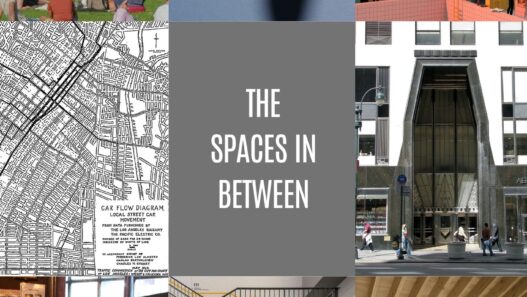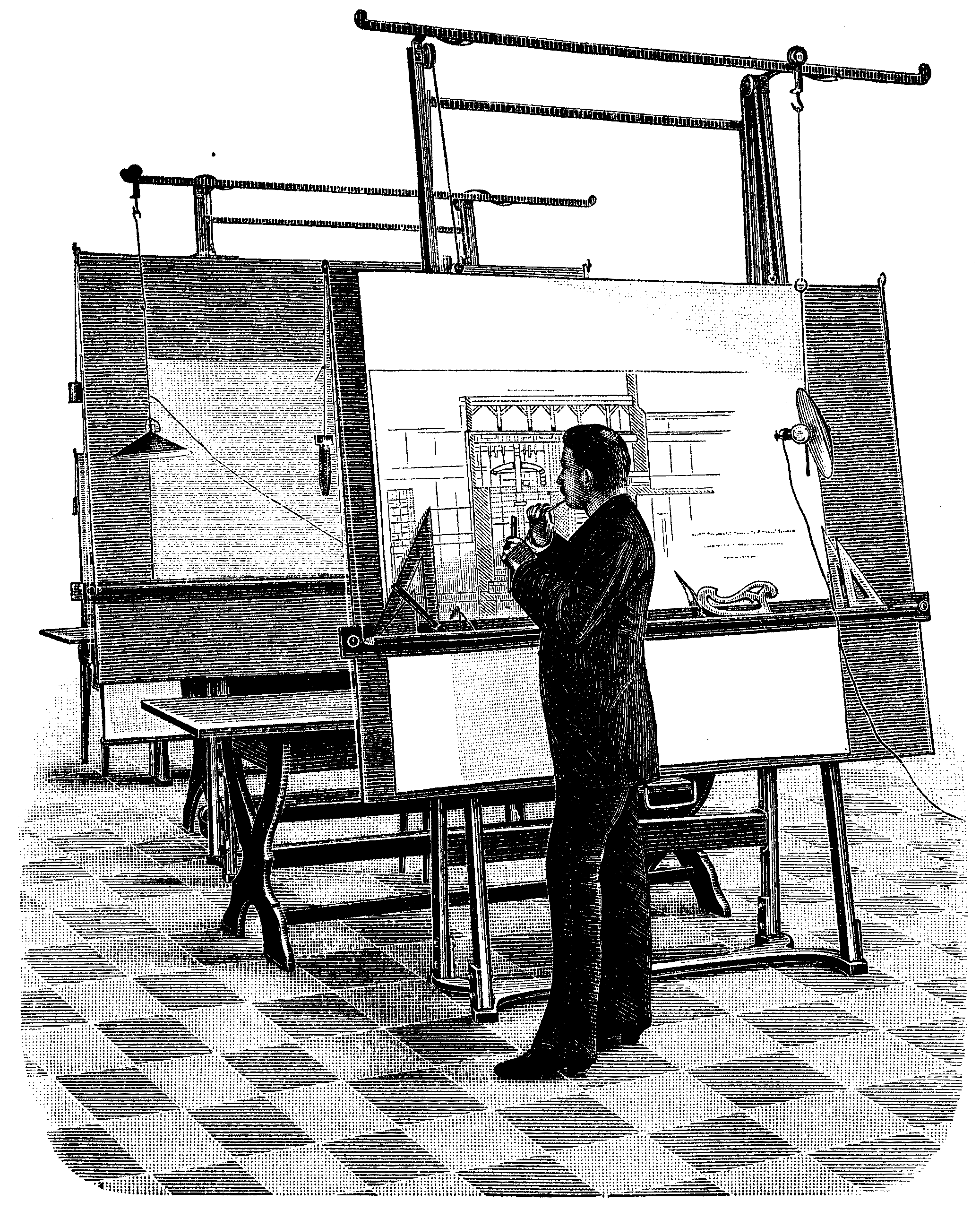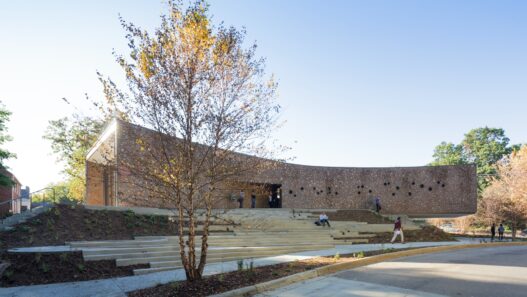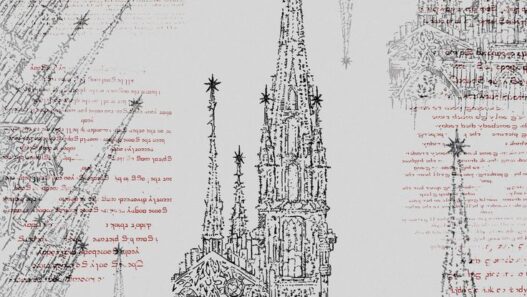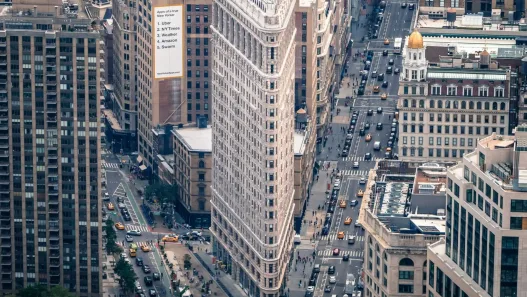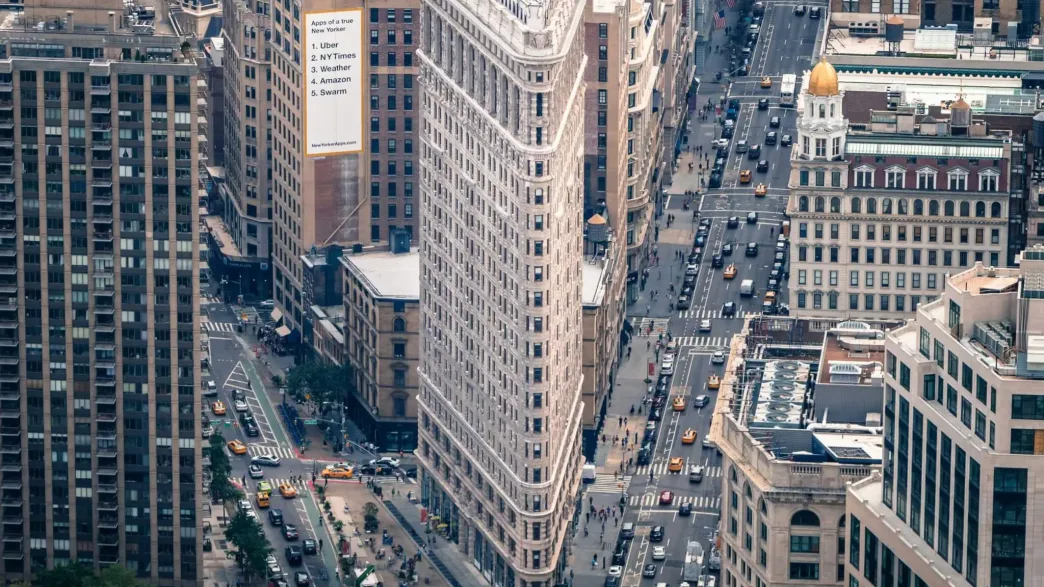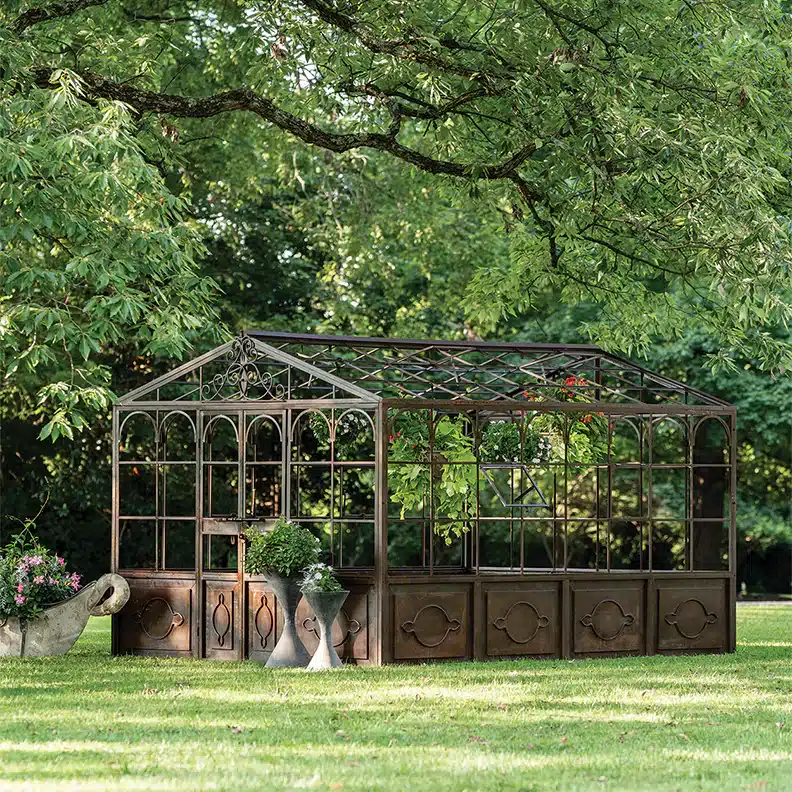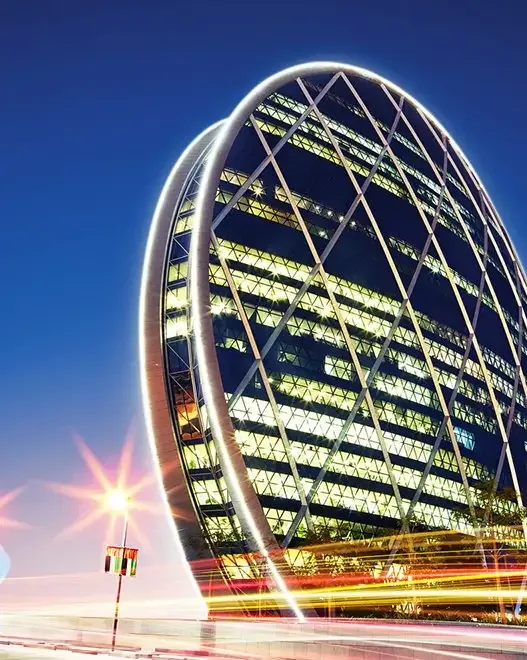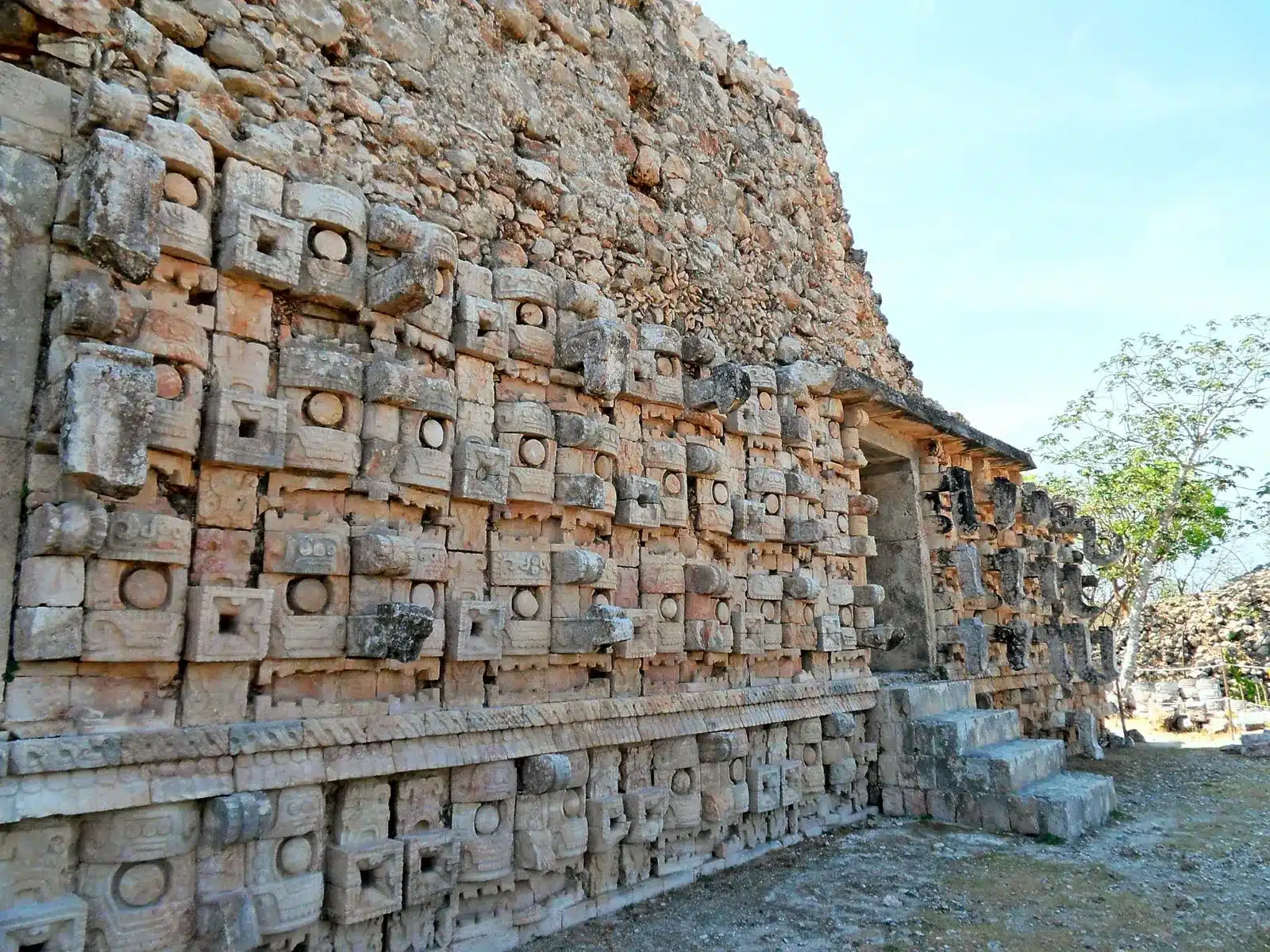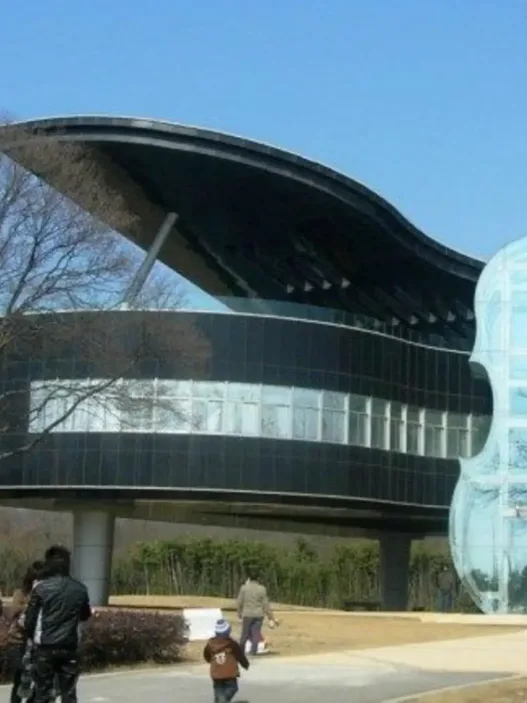An iconic structure located in New York City, the Flatiron Building stands as a testament to innovative architecture and urban design. Completed in 1902, this triangular-shaped building has captivated the imagination of architects, artists and passers-by. Its unique form, striking presence and historical significance make it an important part of New York’s architectural narrative.
- Location: Flatiron Building is located at 175 Fifth Avenue, New York City, USA.
- Year of Completion: The building was completed in 1902.
- Designed by architect Daniel Burnham, the Flatiron Building is a leading example of Beaux-Arts architecture.
- Height: The building is approximately 87 meters (285 feet) high.
- Shape: The Flatiron Building is famous for its unique triangular shape, which resembles a flat iron and gave it its name.
- Materials: The facade is constructed of limestone and terracotta, contributing to its distinctive appearance.
- Cultural Significance: The Flatiron Building is considered one of New York’s most iconic landmarks and is a symbol of the city’s architectural innovations.
- Design Features: It has a distinctive cornice and a number of decorative elements that enhance its elegance.
- Historic Recognition: The building was designated a New York City Landmark in 1966 and added to the National Register of Historic Places in 1979.
- Public Perception: The Flatiron Building is a popular tourist attraction and has been featured in numerous films, photographs and artworks symbolizing the spirit of New York City.
The Flatiron Building symbolizes the city’s rapid growth and transformation in the early 20th century and captures the spirit of an era when skyscrapers began to define urban landscapes.

Historical Context
To understand the Flatiron Building’s place in history, we must first consider the period in which it was built. The late 19th and early 20th centuries marked a period of significant change in America, especially in urban centers like New York. The rise of industrialization and the influx of immigrants led to rapid population growth, requiring new and innovative architectural solutions to accommodate the growing city. The Flatiron Building was designed by architect Daniel Burnham at a time when skyscrapers were emerging as a symbol of modernity and economic power.
The building was originally commissioned by businessman George A. Fuller and completed at a time when the area was still developing. The triangular-shaped site at the intersection of Fifth Avenue and Broadway posed a unique challenge, but it was precisely this challenge that led to Flatiron’s distinctive shape. At the forefront of architectural experimentation, it was one of the first skyscrapers to use a steel frame, providing greater height and stability.
Architectural Significance
The architectural significance of the Flatiron Building cannot be overstated. Characterized by its flat, triangular form, its design was revolutionary and set a precedent for future skyscrapers. At the time of its completion, it was one of the tallest buildings in the world, rising in storeys. The Beaux-Arts style of the building, with its ornate details and classical elements, reflects the aesthetic values of the period and combines functionality with elegance.
Flatiron’s façade is made of limestone and terracotta, adding to its visual weight and grandeur. The building’s pointed tip, designed to cut through the urban fabric, creates a dramatic silhouette against the New York skyline. The integration of large windows enhances the building’s natural light and ventilation, while showcasing the advances in building technology in the early 20th century.
Location and Environment
Located in the vibrant Flatiron District, the Flatiron Building occupies a prominent position in New York’s landscape. Its unique triangular shape makes it stand out among the more traditional rectangular buildings that surround it. Located at the intersection of Fifth Avenue and Broadway, the area has historically been a focal point for commerce and transportation.
Its location is steeped in history as the Flatiron District transformed from a residential area to a commercial center as the city expanded. The building’s proximity to parks and other cultural landmarks adds to its charm, making it a popular destination for tourists and locals alike. The area’s vibrant atmosphere of shops, restaurants and art galleries complements the architectural beauty of Flatiron, creating a dynamic urban environment.
Purpose and Use
Originally designed as an office building, the Flatiron Building has served a variety of purposes throughout its history. In its early years, it housed a range of businesses, including publishing houses and advertising agencies, reflecting the commercial nature of the surrounding area. The innovative design allowed for open office spaces conducive to the collaborative working environment of the time.
Today, while the building still functions as an office space, it has also become a cultural landmark. It attracts visitors from around the world to admire its unique architecture and historical significance. The Flatiron Building has been featured in countless films, photographs and artworks, further cementing its status as a symbol of New York.
Iconic Status
Over the years, the Flatiron Building has acquired an iconic status that goes beyond its architectural value. It is often considered one of the most photographed buildings in the world and has become synonymous with New York City. Its striking silhouette and historical context make it a favorite subject for artists and photographers, while its presence in popular culture reinforces its status as an architectural icon.
The building represents much more than a physical structure; it embodies the spirit of innovation and resilience that characterizes New York. As the urban landscape continues to evolve, the Flatiron Building remains a treasured landmark that reminds us of the city’s rich history and its ongoing journey into the future. Its enduring appeal lies in its ability to connect people to a bygone era while continuing to inspire a new generation of architects and urban planners.
Architectural Design and Features
Architectural design is a complex blend of art and science, where creativity meets functionality. It encompasses various elements that contribute to the overall aesthetics and usability of buildings and spaces. This section explores the nuances of architectural design, the different sources of inspiration behind it, the materials that form its backbone, the innovations that drive it forward and the visual elements that captivate the eye.
Design Inspiration
Every architectural masterpiece begins with inspiration. Designers often draw inspiration from nature, history, culture and even personal experiences. For example, the flowing lines of a river can inspire the form of a building and create a harmonious relationship between the structure and its surroundings. Historical references such as classical columns or Gothic arches can also shape modern designs, allowing architects to pay homage to the past while innovating for the future.
Global influences play an important role in contemporary architecture. As cultures converge in urban centers, architects are blending various styles to create unique hybrid designs. A striking example is the Sydney Opera House, where inspiration from sailboats and natural forms has led to an iconic silhouette that has become synonymous with Australia.
Exploring the local context is equally important. Sustainable architecture often draws on regional materials and climatic considerations to create buildings that are in harmony with their surroundings. This connection fosters a sense of identity and belonging, making buildings not only places to live, but also expressions of culture and community.
Materials Used
The choice of materials in architecture is fundamental and affects both the aesthetic appeal and structural integrity of a design. Traditional materials such as wood, stone and brick evoke a sense of warmth and permanence, while modern materials such as glass, steel and concrete allow for bold and expansive designs.
Wood, for example, is renowned for its natural beauty and versatility. It can seamlessly blend into a variety of styles, from rustic cottages to sleek modern homes, creating cozy interiors and stunning exteriors. On the other hand, steel and glass have revolutionized urban architecture, allowing taller, lighter structures that invite natural light and offer stunning views.
Sustainability has also become an important consideration in the choice of materials. Innovations such as recycled steel, bamboo and rammed earth are gaining traction. These materials not only reduce environmental impact, but also promote energy efficiency. Bosco Verticale in Milan exemplifies this trend by incorporating greenery into its façade, improving air quality and enhancing urban biodiversity.
Structural Innovations
Innovations in structural engineering have transformed architectural possibilities. Techniques such as cantilevering, tensile structures and modular construction push the limits of what buildings can achieve. Cantilevering, where parts of a building extend outwards without support, creates dramatic overhangs and opens up interior spaces to panoramic views.
Tensile structures, often made of lightweight materials, utilize tension to create striking forms. The use of fabric membranes in stadiums or pavilions allows for large, airy spaces that are both functional and visually stunning. The Millennium Dome in London is a prime example, with its expansive roof supported by cables creating a dynamic silhouette against the skyline.
Modular construction, where parts of a building are prefabricated off-site and assembled on site, is another innovation gaining popularity. This method also reduces waste and labor costs. Projects like BTower in Brooklyn demonstrate the potential of modular design, proving that efficiency can coexist with high-quality architecture.
Facade and Aesthetic Aspects
The facade of a building is its face, an opportunity for architects to convey meaning and emotion. A well-designed facade can tell a story, reflecting the purpose and context of the building. For example, the Guggenheim Museum in Bilbao has a sculptural, metallic facade that reflects the innovative art it houses and attracts visitors from around the world.
Aesthetic elements such as color, texture and pattern also play an important role. The use of contrasting materials can create visual interest, while intricate patterns can evoke cultural motifs or historical references. The Sagrada Familia in Barcelona, with its elaborate carvings and vibrant stained glass, reflects the beauty of architectural detail and draws visitors into its complex narrative.
Landscape and environmental elements further enhance the façade. Open spaces, gardens and water features can soften the appearance of a building, creating a seamless transition between architecture and nature. Green roofs or living walls also contribute to environmental sustainability by promoting biodiversity in urban environments.
Triangle Shape
The triangle shape is a powerful architectural element symbolizing strength and stability. This geometric form has been used in various cultures and styles, often seen in roofs, trusses and even entire buildings. The triangle’s ability to distribute weight evenly makes it a favorite among engineers and architects alike.
In modern architecture, the triangle can be a striking design choice. The Louvre Pyramid in Paris serves as an iconic entrance to the historic museum, reinterpreting the triangular form in a contemporary context with its sleek glass and metal structure. This fusion of old and new exemplifies how traditional shapes can be reimagined within modern frameworks.
Triangular shapes also find their place in sustainable design. The use of triangular modules can contribute to energy efficiency by optimizing the use of space and materials. The triangular balcony configurations used in buildings such as Bosco Verticale allow plants maximum exposure to sunlight while enhancing the overall aesthetics of the building.
In summary, architectural design is a multifaceted discipline that combines creativity with practicality. From the inspiration behind a design to the materials used, structural innovations, aesthetic choices and even the shapes used, every element contributes to the narrative of a building. Through thoughtful design, architecture can beautify our environment, strengthen connections and inspire future generations.
Historical Timeline
The historical timeline of architecture is a fascinating journey that reflects human creativity, cultural evolution and technological advances. Each era has left its mark, shaping not only the physical landscape, but also the way we interact with spaces. Understanding this timeline allows us to appreciate the roots of modern buildings and the stories they tell.
Construction Starts
The story of construction begins with ancient civilizations, where practical needs dictated the design of shelters. Early humans built simple dwellings from natural materials such as wood, stone and clay. These structures were also expressions of environment and culture. In Mesopotamia, for example, the use of adobe led to the development of ziggurats, which served both as temples and symbols of social power. The Egyptians also left their mark with monumental structures such as the pyramids, demonstrating a deep connection with religion and the afterlife. These early buildings laid the foundation for the architectural principles that would be developed over the millennia.
Milestones
As civilizations advanced, so did architectural techniques and styles. The Greek and Roman periods brought important milestones such as the introduction of columns, arches and domes. The Parthenon in Athens is a prime example of classical architecture, emphasizing harmony and proportion. The Romans developed engineering with innovations such as concrete and aqueducts, enabling grand structures such as the Colosseum. During the Middle Ages, Gothic architecture emerged, characterized by intricate stained glass and soaring cathedrals with flying buttresses. Each of these milestones reflected the values, beliefs and technological capabilities of their time.
Restoration Efforts
Over time, many historic buildings have deteriorated due to neglect, natural disasters and urban development. Restoration work has become crucial to preserve these architectural treasures. For example, the restoration of Notre-Dame Cathedral in Paris in the 19th century emphasized the importance of preserving cultural heritage. Skilled artisans and architects worked to repair and restore the structure using traditional techniques, ensuring its historical integrity. Today, restoration is often guided by principles that balance conservation with modern safety standards, as seen in the recent restoration of the Sistine Chapel, which carefully cleaned and preserved Michelangelo’s frescoes without compromising their original beauty.
Changes over the years
Architecture has constantly evolved in response to social changes, technological advances and cultural shifts. The Industrial Revolution marked an important turning point with the introduction of new materials such as steel and glass that transformed architectural possibilities. Skyscrapers began to dominate city skylines, symbolizing economic growth and technological progress. The 20th century saw movements such as Modernism, which challenged traditional forms and embraced minimalism and functionality. Architects such as Frank Lloyd Wright and Le Corbusier redefined how spaces could be used, emphasizing open layouts and integration with nature. These changes reflect a broader cultural narrative of how architecture adapts to the needs and aspirations of society.
Recent Developments
In recent years, architecture has taken on new dimensions with the rise of sustainability and smart technology. Architects are increasingly focusing on designing energy-efficient and environmentally friendly buildings. Innovations such as green roofs, solar panels and sustainable materials are becoming standard practice. In addition, the use of smart technology has transformed the functioning of buildings, enabling automated systems that improve comfort and efficiency. Iconic examples of these developments include Bosco Verticale in Milan, a pair of residential towers covered in trees and plants, and the Edge in Amsterdam, hailed as one of the world’s greenest buildings. These recent trends not only address current challenges, but also pave the way for a future where architecture plays an important role in promoting sustainability and improving quality of life.
Through this historical timeline, we see that architecture is not just about constructing buildings; it is a reflection of humanity’s journey, aspirations and ever-evolving relationship with our environment. Each semester contributes unique insights that remind us that the spaces we inhabit are deeply intertwined with our cultural identity and history.
Cultural Influence and Representation
Architecture is a reflection of the society that created it. The cultural influence and representation of architecture shapes our understanding of space and place, affecting everything from everyday life to the larger narratives of societies. This section discusses various aspects of cultural influence, from how architecture appears in popular media to its role in public engagement and artistic interpretations.
Appearances in Popular Media
Architecture often plays an important role in popular media, helping to shape narratives and create environments that resonate with audiences. Think of iconic buildings in movies and TV shows; they become characters in their own right. The Eiffel Tower, for example, symbolizes romance and adventure in countless films. Similarly, the sleek lines of modern skyscrapers in New York set the stage for stories of ambition and desire.
Television shows such as “Friends” and “Sex and the City” have made Manhattan’s brownstones and high-rises the center of their plots, creating a link between the viewer and the city itself. These representations influence public perception, making certain architectural styles synonymous with certain lifestyles or cultural identities. As audiences engage with these narratives, they internalize a vision of what these buildings represent, which often leads to increased tourism and interest in real-life places.
Symbol of New York City
New York’s skyline is one of the most recognizable in the world, with buildings like the Empire State Building and the Statue of Liberty symbolizing hope and ambition. They are more than architectural achievements; they embody the spirit of a city thriving on diversity and resilience. The Empire State Building, completed in 1931, is often seen as a symbol of the American Dream, representing the heights of human achievement during a period of economic turmoil.
Moreover, the World Trade Center site has transformed from a symbol of prosperity to a poignant reminder of loss and recovery. The design of the new One World Trade Center also expresses renewal and strength in the face of adversity. Such buildings are deeply embedded in the cultural psyche of New Yorkers and visitors alike, serving as focal points for community identity and pride.
Impact on Architecture
The cultural context in which architecture exists significantly influences its development. Architectural styles often emerge in response to social needs, technological developments and artistic movements. For example, the mid-20th century witnessed the rise of Brutalism, a style characterized by its raw concrete and bold forms, a reaction to the flashy, ornate styles of the past. This architectural movement was often associated with social housing projects that aimed to provide affordable living spaces in urban environments.
In our globalized world, the cross-cultural exchange of architectural ideas has led to innovative designs that blend traditions. The interplay of Eastern and Western architectural philosophies can be seen in structures such as the Beijing National Stadium, which combines traditional Chinese aesthetics with modern engineering. This fusion also encourages a greater appreciation of different cultural narratives.
Community Engagement
Architecture can serve as a powerful tool for community engagement by encouraging social interaction and participation. Public spaces such as parks, plazas and community centers are designed to be inclusive, encouraging people from different backgrounds to come together. The High Line in New York is a prime example of this, transforming a former elevated railroad into a vibrant public park that encourages social interaction and community pride.
Involving local communities in the design process is crucial to creating spaces that reflect their needs and values. Initiatives such as participatory design workshops allow residents to voice their views and contribute their ideas, ensuring that new developments resonate with the community. This approach increases the cultural significance of architecture as it becomes a true representation of the people it serves.
Artistic Interpretations
Architecture has long been a source of inspiration for artists in a variety of media. From painting and sculpture to photography and film, the artistic interpretation of architectural forms can reveal deeper truths about society and culture. Artists such as Edward Hopper captured the essence of urban life through his depictions of buildings and streets, reflecting themes of isolation and connection in modern society.
Contemporary artists are also challenging traditional notions of space and structure by exploring architecture through installations and performances. For example, the work of artists such as Olafur Eliasson, who creates immersive environments that interact with the viewer, invites us to reconsider our relationship with the built environment. These artistic interpretations encourage us to see our surroundings through new and creative lenses.
In conclusion, the cultural influence and representation of architecture is profound and multifaceted. From its depiction in popular media to its role as a beacon of society, architecture shapes our experiences and identities. By engaging with these narratives and interpretations, we can appreciate the deeper connections between the places we live and the cultures we belong to.
Visitor Information
When planning to visit an important architectural site or landmark, having the right information can tremendously enhance your experience. This section aims to provide the essential details that will make your journey smoother and more enjoyable. From travel tips to nearby attractions, we cover everything you need to know to make the most of your visit.
How to get there
Getting to your destination can be one of the most exciting parts of your visit. Depending on where you are coming from, there are various modes of transportation to consider. If you are traveling by car, it is helpful to check the route in advance, especially if you are navigating urban areas where traffic can be unpredictable. Public transportation such as buses or trains often offer a convenient way to reach popular destinations without the hassle of parking. Many cities also have bike sharing programs that allow you to explore at your own pace while enjoying the local scenery. If you are arriving by plane, look for shuttles or ridesharing apps that can take you directly to your destination.
Best Times to Visit
Timing can greatly affect your experience. Certain times of the year offer unique events or beautiful seasonal changes that beautify architectural spaces. For example, a visit in spring allows you to see the blooming gardens surrounding a historic building, while fall can offer stunning foliage that complements the architecture. Also, weekdays tend to be less crowded than weekends, allowing for a more intimate exploration. If you prefer guided tours, it is worth checking the schedule in advance as some tours are seasonal or may have specific times.
Nearby Attractions
Architectural landmarks are often located in vibrant neighborhoods rich with other attractions. Exploring the area surrounding your main site can reveal hidden gems such as quaint cafes, art galleries or local markets. For example, if you visit a famous cathedral, you may find an adjacent museum showcasing regional art or history. Interacting with these nearby attractions will not only enrich your visit, but also provide insight into the culture and history of the area. Take time to wander and explore local shops or parks that are not on your itinerary but can add depth to your experience.
Tours and Experiences
Many architectural sites offer guided tours that will give you a better understanding of the building’s history and significance. These tours can range from in-depth explorations led by knowledgeable guides to self-guided audio tours that allow you to explore at your own pace. Special experiences such as behind-the-scenes access or themed tours focusing on specific aspects of the architecture can make your visit memorable. Attending workshops or lectures when appropriate can further deepen your appreciation for the art and craftsmanship behind these structures.
Accessibility Features
Ensuring that everyone can enjoy architectural spaces is becoming increasingly important. Many landmarks now prioritize accessibility with ramps, elevators and designated seating areas. It is wise to check the site’s website or contact them directly to inquire about available services. Some sites offer guided tours specially designed for visitors with mobility difficulties or visual impairments. Understanding these features in advance can help you plan a visit that is both enjoyable and accommodating, allowing everyone to appreciate the beauty and complexity of architecture without barriers.
By gathering this information, you are better equipped to embark on a rewarding architectural adventure. Whether you are a history buff, an art lover or simply curious about the built environment, knowing how to orient your visit can lead to memorable experiences.
Future Perspective
As we conclude our examination of the Flatiron Building, it is important to reflect on its enduring legacy, ongoing preservation efforts, challenges ahead, and current state. Capturing the imagination of many, this iconic building stands as a symbol of New York’s rich cultural history.
The Legacy of the Flatiron Building
Completed in 1902, the Flatiron Building is more than a work of architecture; it is a cultural landmark that defined Manhattan’s skyline. Revolutionary at the time, its unique triangular shape pushed the boundaries of design and inspired countless architects. The building’s distinctive appearance has made it an icon of the city, frequently featured in art, film and literature. It embodies the spirit of the early 20th century, a period when New York was rapidly transforming into a modern metropolis. Today, it is a reminder of the creativity and ambition that characterized the period, influencing contemporary architectural practice and urban planning.
Ongoing Conservation Work
As the Flatiron Building ages, various organizations and passionate individuals work tirelessly to preserve its integrity and charm. Preservation efforts are also crucial to the historical and cultural context it represents. These initiatives often involve meticulous restoration work to ensure that the building retains its original features, while at the same time being updated to meet modern standards of safety and accessibility. Local residents and preservationists play an important role in these efforts, advocating for the building’s significance and demanding continued support from city officials. This collaborative spirit is vital to ensuring that the Flatiron Building continues to stand tall as a treasured part of New York’s architectural heritage.
Future Challenges
Despite ongoing conservation efforts, the Flatiron Building faces several challenges that could threaten its future. One key challenge is the impact of climate change. Rising temperatures and extreme weather events pose risks to the building’s structure and surrounding environment. In addition, urban development pressures in New York mean that the Flatiron’s unique location and sightlines could be compromised by new construction. Balancing the needs of modernization while preserving historic integrity is a complex task that requires innovative solutions and careful planning. Ongoing dialog between preservationists, urban planners and the public will be crucial in meeting these challenges.
Flatiron Building Today
Today, the Flatiron Building remains a bustling center of activity, attracting tourists, photographers and locals alike. Its vibrant location at the intersection of Fifth Avenue and Broadway makes it a lively spot for both entertainment and commerce. Home to a variety of offices, the building has adapted to modern uses while maintaining its historic character. Events and exhibitions often take place nearby, showcasing the building’s role in contemporary culture. The surrounding areas have also been developed with parks and public spaces that encourage community participation, making Flatiron a focal point of urban life. The blend of history and modernity offers a unique experience to all who visit.
FAQ
1. What is the Flatiron Building?
The Flatiron Building is a historic skyscraper in New York City, known for its distinctive triangular shape.
2. Who designed the Flatiron Building?
The building was designed by architect Daniel Burnham.
3. When was the Flatiron Building completed?
The Flatiron Building was completed in 1902.
4. How tall is the Flatiron Building?
The building is about 87 meters (285 feet) high.
5. Why is it called the Flatiron Building?
It is named after its flat iron shape, which resembles a traditional flat iron used for ironing clothes.
6. What architectural style is the Flatiron Building?
The Flatiron Building is an example of Beaux-Arts architecture.
7. What materials were used in its construction?
The facade is made of limestone and terracotta, which contributes to its unique appearance.
8. Is the Flatiron Building a historic landmark?
Yes, it was designated a New York City Landmark in 1966 and added to the National Register of Historic Places in 1979.
9. What makes the Flatiron Building culturally significant?
The building is considered an iconic symbol of New York and represents architectural innovation and design.
10. Can visitors enter the Flatiron Building?
While the building is mainly office space, it is a popular tourist attraction and visitors often take photos and explore the surroundings.
Reflections on the Flatiron Building
The Flatiron Building stands as an iconic symbol of New York City, mesmerizing observers with its striking triangular shape. Designed by Daniel Burnham and completed in 1902, this architectural masterpiece represents the innovation of its time. Its unique façade, made of limestone and terracotta, showcases the intricate details that define the Beaux-Arts style, making it stand out in the city skyline.
The Flatiron Building also represents the vibrant spirit of urban life in the early 20th century. Its design maximizes the use of limited space and reflects the creativity of architects at a time when the city was rapidly expanding. The building’s elegant cornice and decorative elements add to its charm, making it a favorite subject for photographers and artists alike.
What are your thoughts on the Flatiron Building? Do you believe its design effectively captures the essence of New York? Is there a particular feature of this architectural gem that particularly resonates with you? We invite you to share your views. If you haven’t yet checked out our review of the Empire State Building, you can do so by clicking here.
Architect: Daniel Burnham
Architectural Style: Beaux-Arts
Year: 1902
Location: New York City, USA



